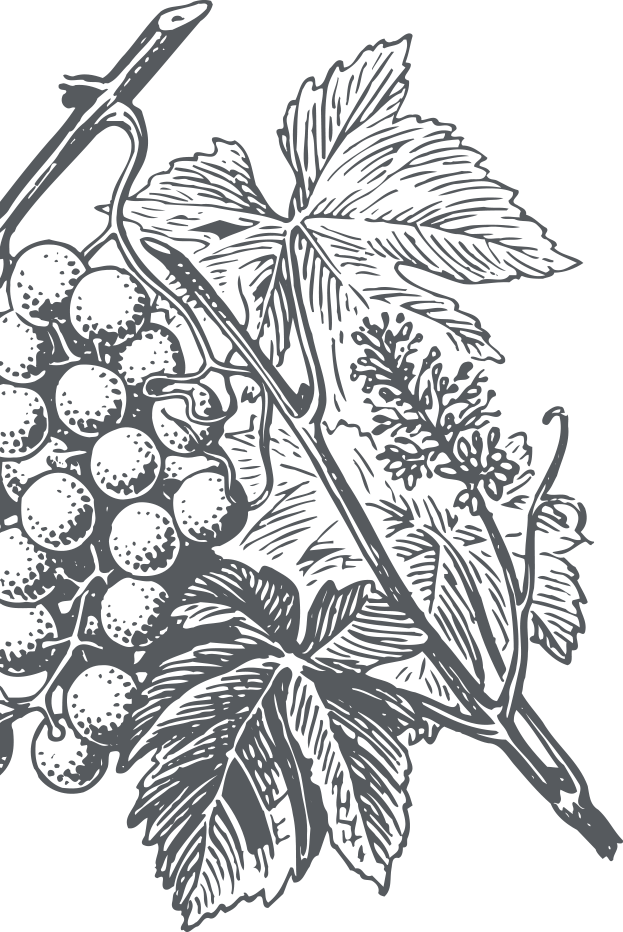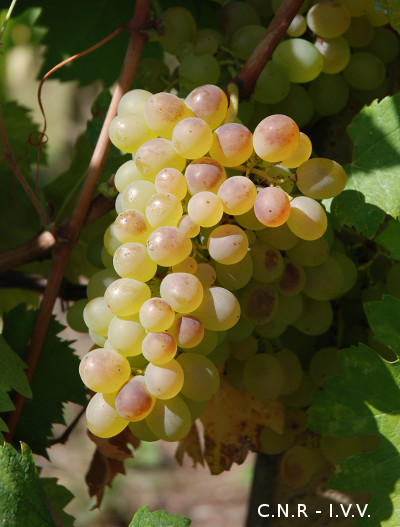


A great variety of grapes are cultivated in the vineyards of the province of Torino, the home of an age-old winemaking tradition. The many varieties found in the area today are the result of an intense exchange of vegetative material in the past, and of genetic modifications prompted by microclimatic adaptations in areas where vinegrowing has developed. Alongside more recent and expanding grape varietals such as Barbera, Bonarda, Dolcetto, Freisa and Nebbiolo, there are others that occasionally produce niche products with specific organoleptic characteristics, that can be described as old if not exactly native. These grapes have a strong link with the environment and the territory, and with historical vine-growing traditions.
They include Erbaluce, Neretto and Ner d’Ala in the Canavese, Avanà and Becuet in the Susa Valley, Cari (Pelaverga) and Malvasia di Schierano in the Collina Torinese district, and Doux d’Henry and Chatus in the Pinerolese area. Wine produced from these grapes is unique and has a strong local and historical-cultural identity.

Nessun sinonimo vero e proprio, anche se, nelle zone ove era tradizionalmente presente, i viticoltori locali ne ricordano varianti del nome anche piuttosto distanti, come “Bertacuciàt”, o lo chiamano “Berlu ‘d ciàt”. Si sono trovati riferimenti storici locali, risalenti alla fine del 1800, per un “Berlon ‘d ciat bianco”.L’etimologia del nome è incerta, ma tale […]
Nebbiolo is now grown all over Piemonte, but probably originated in the Alpine valleys, and is one of the oldest grapes in the region; this is borne out by the large number of sub-cultivars and biotypes of the vine, the fruit of diversification in different environments. In the province of Torino it produces a number […]
Although it cannot be considered a native grape in the true sense of the word, Erbaluce is of historical importance in the province of Torino because its presence is limited to the northern part of Piemonte and the Canavese hills in particular, where it has prospered, finding the best environmental conditions for its development. It […]
Neretto di Bairo can be found all over the Canavese hills; it is a varietal with red grapes that once played a very important role in local winemaking. Today it is grown sporadically and is used to produce Canavese Rosso DOC but is rarely used singly. It is a vigorous vine, but because the buds […]
Ner d’Ala is cultivated in the upper Canavese hills in particular, where it is known as Vernassa. It was only recognised as suitable for cultivation in Piemonte in 2004. It is a very vigorous vine which prefers the extended growing structure and drastic pruning that are traditional in the Canavese area. It also adapts well […]
Freisa is found in all the wine-producing areas of the province of Torino, and in the Pinerolo and Chieri areas in particular, where it brings out the best of its potential. It has a medium-high level of vigour, and output can be penalised by leakage problems, particularly if the weather is very wet during the […]
In Piemonte, this grape is cultivated almost exclusively in the north of the province of Asti, the Pinerolese area, and in the Collina Torinese; it is often confused with other varietals also called “Bonarda”, such as Croatina in the Oltre Po Pavese area or Uva Rara around Novara. It is a vigorous vine that is […]
This aromatic cultivar was once very popular and widespread, but Malvasia di Schierano is now cultivated only in the Collina Torinese area and in the nearby Asti hills. Because output is moderate and inconstant, it has gradually been replaced by other grape varieties. The vine is not very prone to oidium or mildew, and ripens […]
Cari was once found all over Piemonte, but it is now cultivated almost exclusively around Saluzzo and in the Chieri area, with particular success in the town of Baldissero Torinese. It is a vine of medium vigour that its normally grown on a counter-espalier, and productivity is good but inconstant. The grape is of medium […]
Avanà is one of a number of varietals that can be considered “trans-national” because it also grows in Savoie and Dauphiné. In modern-day Piemonte, it is cultivated almost exclusively in the middle and upper Susa Valley and the Chisone Valley (Pinerolo), where it is supported on a counter-espalier of medium height, or even in the […]
Becuet is widespread in the upper and middle Susa Valley, where it has been cultivated since time immemorial. It is a vigorous grape, particularly in its early years, but over time productivity and vigour balance out. Fertility is high and well distributed over the plant, so that it adapts to short or long pruning. The […]
Dolcetto is grown all over Piemonte, and was introduced in the province of Torino after the outbreak of phylloxera; because it ripens early, it was planted in areas where tardy varietals generally found it difficult to reach maturity (cooler foothills and Alpine valleys). Today it can be found in all wine-producing areas, but to different […]
A rustic, productive grape, which is found all over the province, often in conjunction with other vines. A cultivar with good agronomic and productive characteristics, for it to ripen correctly and technologically, it needs a large amount of heat, and prefers a sunny exposure and a dry position. If these temperature requirements are not met, […]
Chatus is always associated with the acidic, siliceous soil of the western foothills of the Alps, and can be found from the Maira Valley to the Ossola Valley, proof of its importance in the past. A rustic grape, of medium-high vigour with a good growing-productive balance, output tends to be fairly constant, even when climate […]
The Doux d’Henry grape has been cultivated in the Pinerolo area for centuries, to the point that the Conte di Rovasenda indicated it as a native varietal, particularly in the towns of Pinerolo, Bibiana, Perosa Argentina and Torre Pellice. Today the largest vineyards are concentrated in San Secondo di Pinerolo and Prarostino, where they can […]